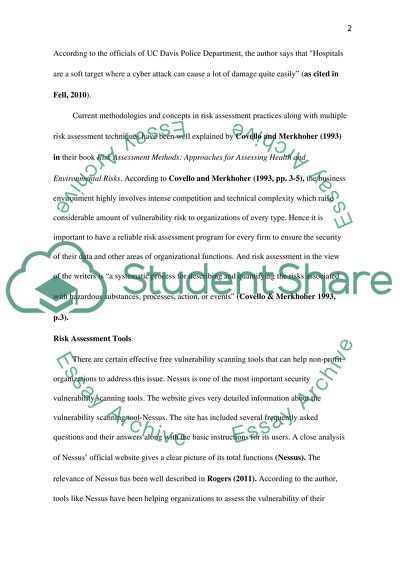Cite this document
(“Risk Assessment For nonprofit hospital Essay Example | Topics and Well Written Essays - 1750 words”, n.d.)
Risk Assessment For nonprofit hospital Essay Example | Topics and Well Written Essays - 1750 words. Retrieved from https://studentshare.org/information-technology/1469867-risk-assessment-for-nonprofit-hospital
Risk Assessment For nonprofit hospital Essay Example | Topics and Well Written Essays - 1750 words. Retrieved from https://studentshare.org/information-technology/1469867-risk-assessment-for-nonprofit-hospital
(Risk Assessment For Nonprofit Hospital Essay Example | Topics and Well Written Essays - 1750 Words)
Risk Assessment For Nonprofit Hospital Essay Example | Topics and Well Written Essays - 1750 Words. https://studentshare.org/information-technology/1469867-risk-assessment-for-nonprofit-hospital.
Risk Assessment For Nonprofit Hospital Essay Example | Topics and Well Written Essays - 1750 Words. https://studentshare.org/information-technology/1469867-risk-assessment-for-nonprofit-hospital.
“Risk Assessment For Nonprofit Hospital Essay Example | Topics and Well Written Essays - 1750 Words”, n.d. https://studentshare.org/information-technology/1469867-risk-assessment-for-nonprofit-hospital.


